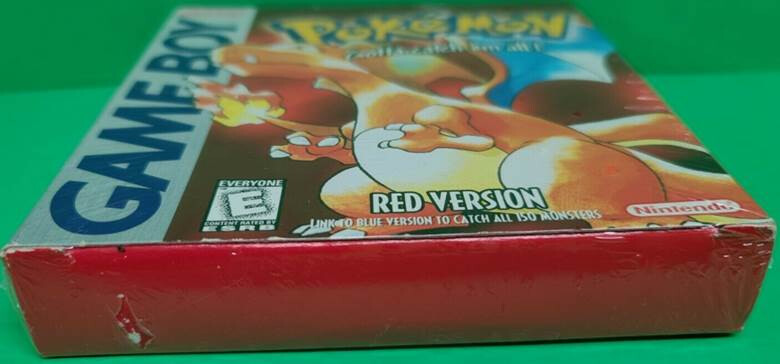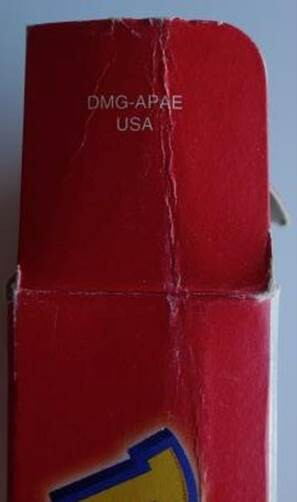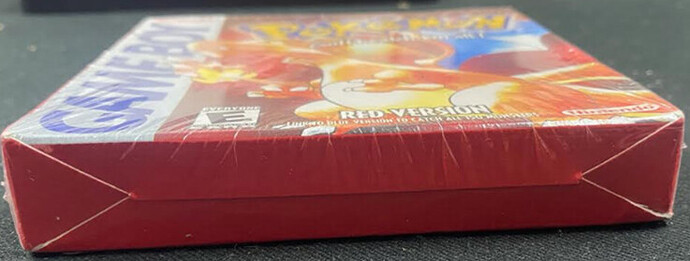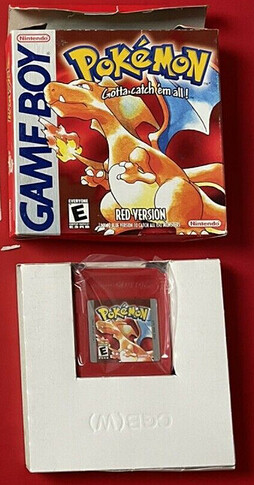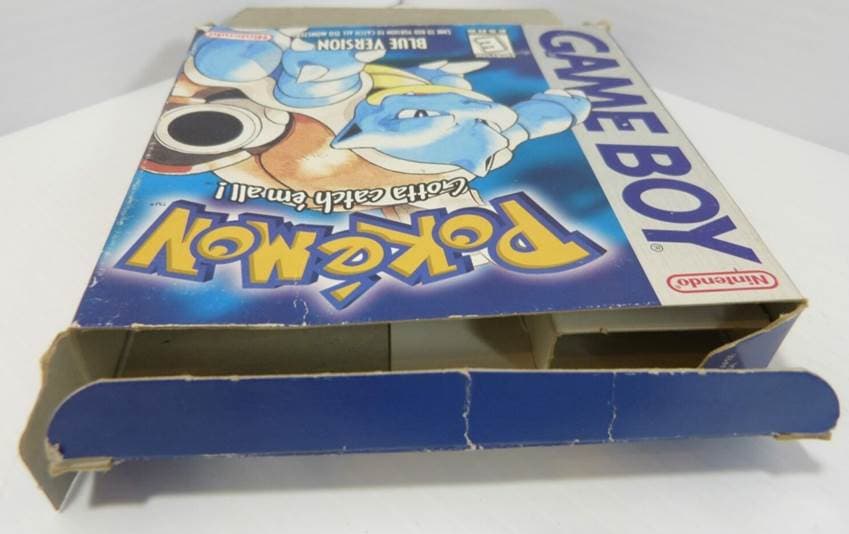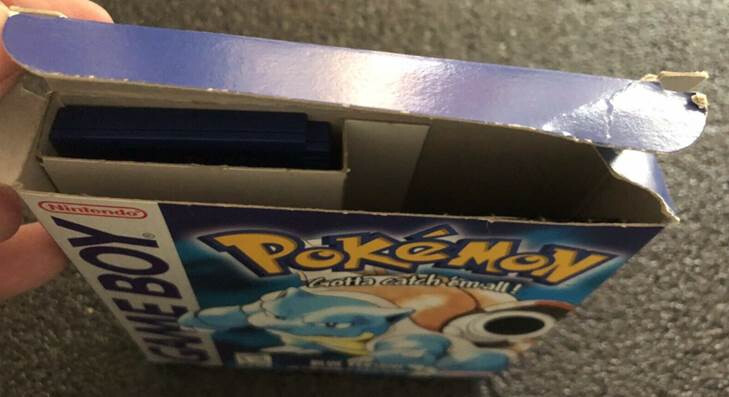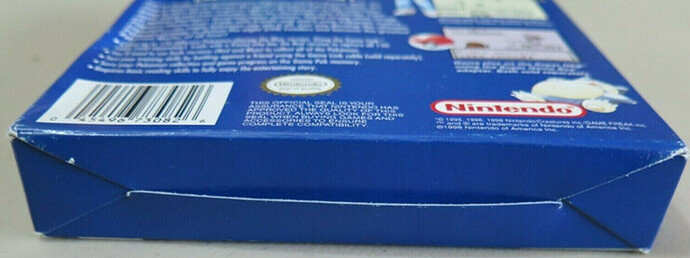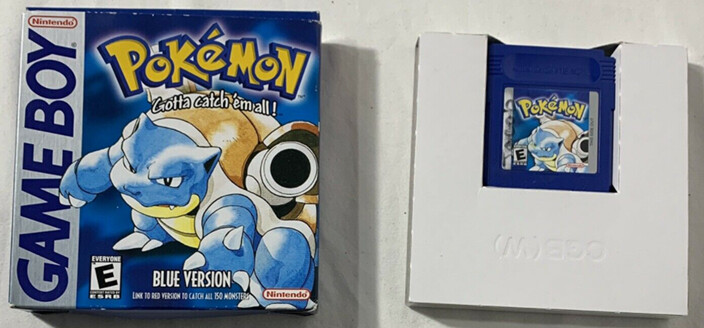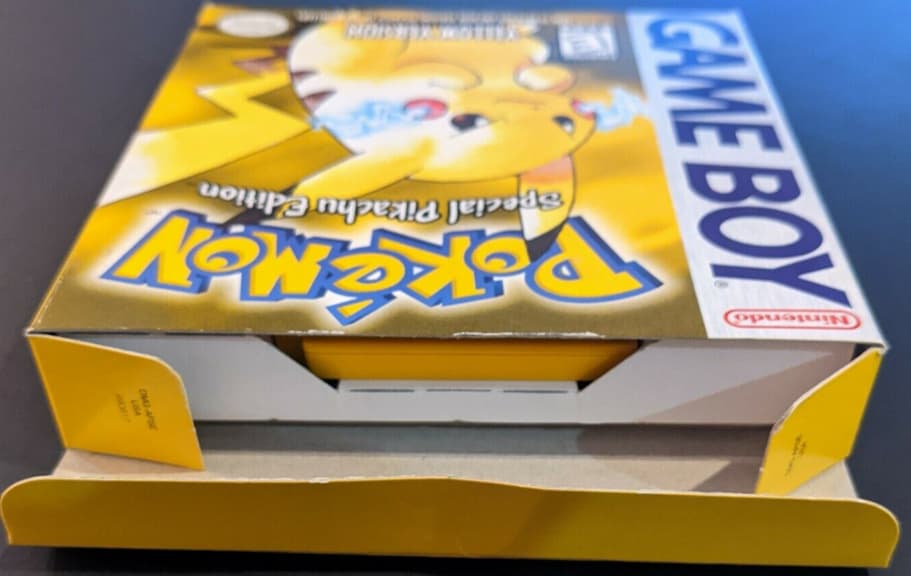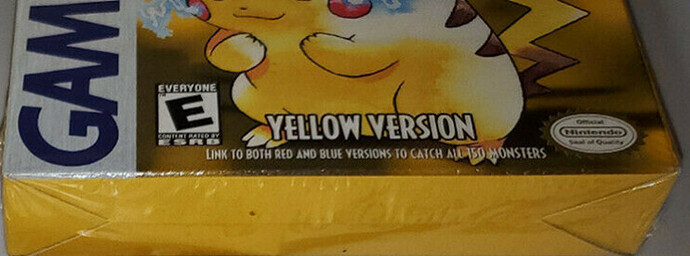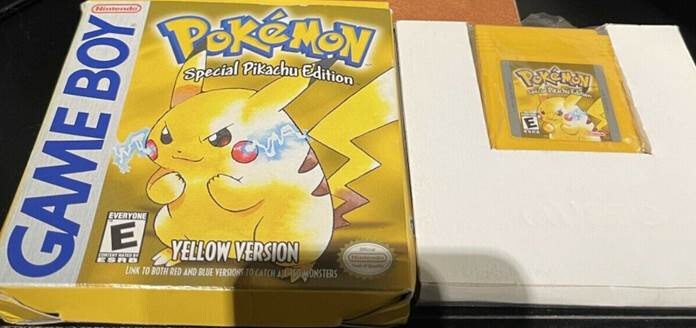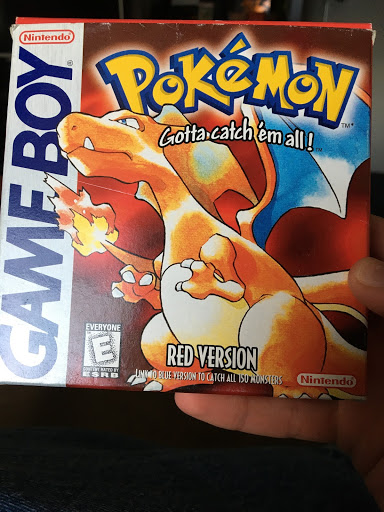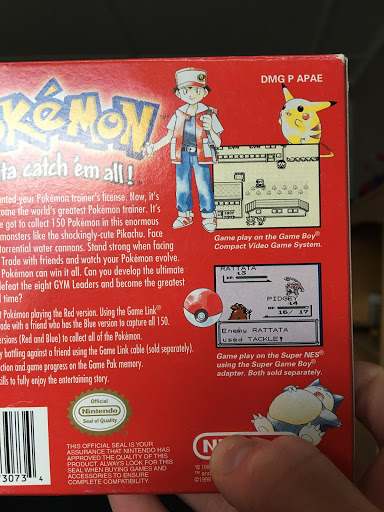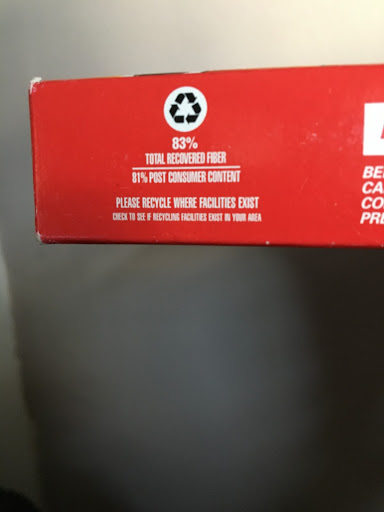Pokémon Red, Blue, Yellow Version Variant Guide
The purpose of this guide is to educate people about the different variants (also referred to as print runs) of Pokémon’s Red, Blue, and Yellow versions. It should be noted that this is not an official guide, and all information is simply evidence-backed speculation. This guide will be updated periodically as/if more evidence or findings are made regarding the Red, Blue, and Yellow version variants.
Quick Summary
 Red Version
Red Version
| First Print | Second Print | Third Print | |
|---|---|---|---|
| Screenshot | Sandshrew vs. Meowth | Pidgey vs. Rattata | Pidgey vs. Rattata |
| ESRB | White | White | Black |
| Fiber Stamp | 100%/55% | 83%/81% | 83%/81% |
| Bottom of Box | Double-Ended | Y-Fold | Y-Fold |
| Insert | Fixed | Removable | Removable |
| Folding Tab Code | U/DMG-APAE USA | DMG-APAE USA | DMG-APAE USA-1 |
| Cartridge Code | DMG-APAE-USA | DMG-APAE-USA-1 | DMG-APAE-USA-1 |
| Cartridge ESRB | White | White | Black |
 Blue Version
Blue Version
| First Print / “Red Error” | Second Print | Third Print | Fourth Print | |
|---|---|---|---|---|
| Screenshot | Sandshrew vs. Meowth | Sandshrew vs. Meowth | Pidgey vs. Rattata | Pidgey vs. Rattata |
| ESRB | White | White | White | Black |
| Fiber Stamp | 100%/55% | 100%/55% | 83%/81% | 83%/81% |
| Bottom of Box | Double-Ended | Double-Ended | Y-Fold | Y-Fold |
| Insert | Fixed | Fixed | Removable | Removable |
| Folding Tab Code | U/DMG-APEE USA | U/DMG-APEE USA | DMG-APEE USA | DMG-APEE USA-1 |
| Cartridge Code | DMG-APEE-USA | DMG-APEE-USA | DMG-APEE-USA | DMG-APEE-USA-1 |
| Cartridge ESRB | White | White | White | Black |
 Yellow Version
Yellow Version
| First Print | Second Print | Third Print | Fourth Print | |
|---|---|---|---|---|
| Screenshot | Pikachu vs. Caterpie | Pikachu vs. Caterpie | Pikachu vs. Caterpie | Pikachu vs. Caterpie |
| ESRB | White | Missing | Black | Black |
| Fiber Stamp | 83%/81% | 100%/55% | 100%/55% | 83%/81% |
| Bottom of Box | Y-Fold | Double-Ended | Double-Ended | Y-Fold |
| Insert | Removable | Fixed | Fixed | Removable |
| Folding Tab Code | DMG-APSE USA | U/DMG-APSE USA | U/DMG-APSE USA-1 | DMG-APSE USA-1 |
| Cartridge Code | DMG-APSE-USA | DMG-APSE-USA/DMG-APSE-USA-1 | DMG-APSE-USA-1 | DMG-APSE-USA-1 |
| Cartridge ESRB | White | White/Black | Black | Black |
Summary Table
 Pokémon Red Version
Pokémon Red Version
Pokémon Red Version sports three different variants. I’ll refer to these variants as the first print, second print, and third print.
First Print Red
The earliest variant is denoted by a pixelated white ESRB on the front of the box, and a Sandshrew vs Meowth screenshot on the back of the box.
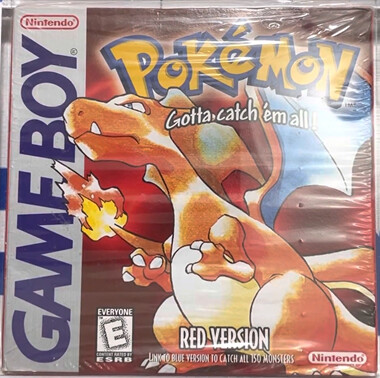
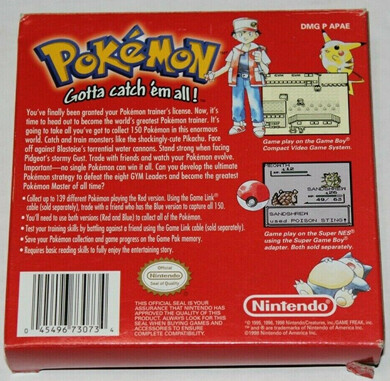
On the right side of the box, you can find a “100% Total Recovered Fiber 55% Post Consumer Content” stamp.
The bottom of the box is a smooth flap that can be used to open the bottom of the box. This type of box is commonly referred to as a double-ended box.
If you look inside of the box of a first print Red version, the insert, which holds the cartridge, can only be found fixed (glued) to the inside of the box.
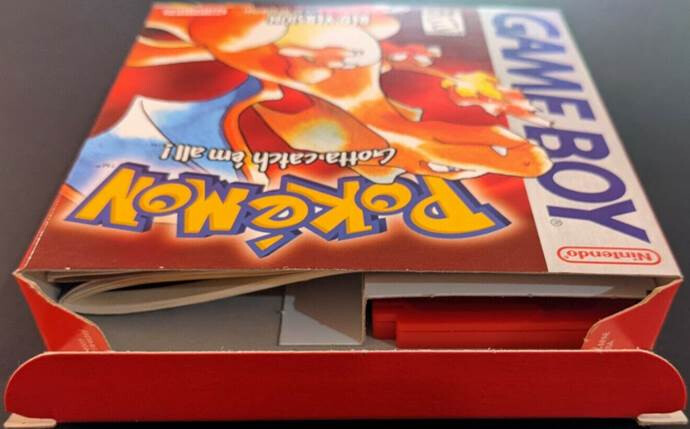
While the box is open, the 4 little tabs which lock the open/close flaps in place read U/DMG-APAE USA.
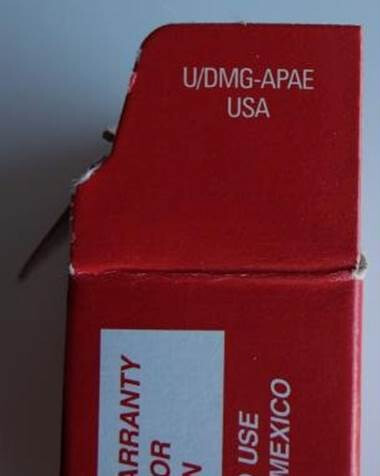
Finally, the cartridge of a first print Red is designated by the DMG-APAE-USA code and pixelated white ESRB symbol.
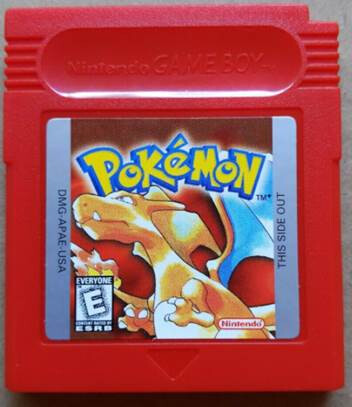
Second Print Red
Much like the first print Red, the second print Red also possesses a pixelated white ESRB logo on the front of its box. However, unlike the first print’s Sandshrew vs Meowth screenshot, the second print carries a Pidgey vs Rattata screenshot on the back of the box.
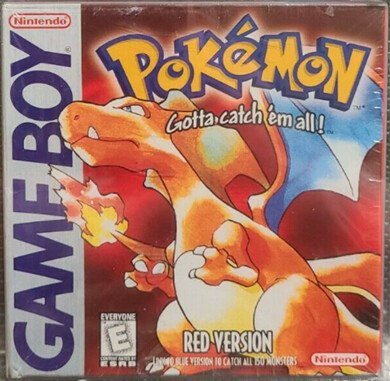
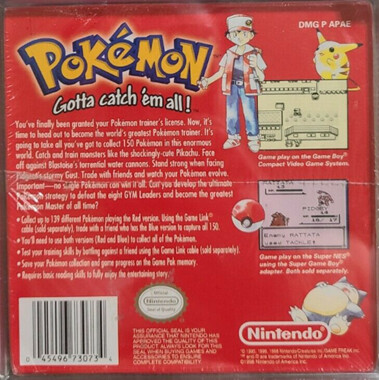
Second print Red copies are accompanied by an “83% Total Recovered Fiber 81% Post Consumer Content” stamp on the right side of the box, rather than the “100% Total Recovered Fiber 55% Post Consumer Content” stamp found on the first print boxes.
Additionally, the bottom of a second print Red box is closed off. This type of box is commonly referred to as a Y-fold.

In the interior of a second print Red box, the cartridge holding insert can only be found removable, unlike the fixed insert found in the first print. When the insert is removed from the box, the box is hollow with no fixed internals.
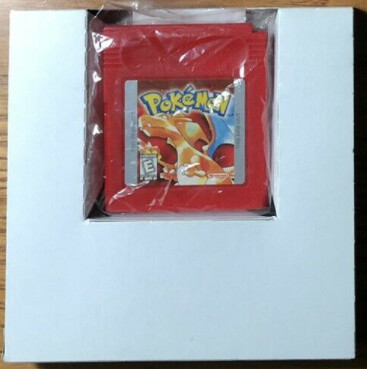
The four tabs on the top and bottom of the box read code DMG-APAE USA.
Finally, the cartridge of a second Red version is found with the DMG-APAE-USA code and pixelated white ESRB, like the first print run. Therefore, the first and second print cartridges are identical on the exterior.
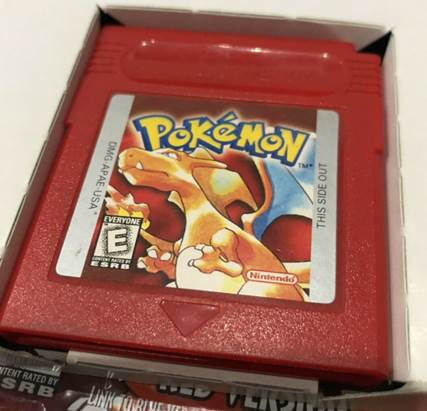
Third Print Red
The third print of Red is much more obvious than the first or second print. The solid black ESRB logo on the front of the box is an immediate designation of a third print. This revision can only be found sporting its predecessor’s Pidgey vs Rattata screenshot on the back of its box.
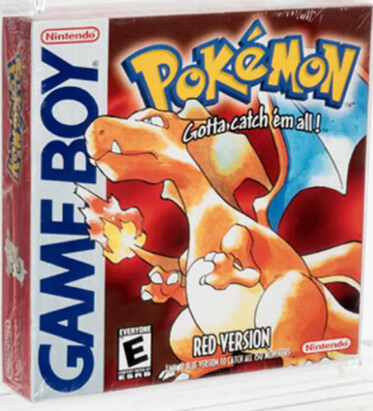

Third print copies possess an “83% Total Recovered Fiber 81% Post Consumer Content” stamp on the right side of the box much like the preceding second print.
Additionally, third print Red versions carry over its predecessor’s closed bottom “Y-fold” design.
In the interior, the cartridge holding insert is carried over from the second print box. Once again, when the insert and content are taken out, the box is hollow with no fixed internals.
The folding tabs on third print Red version boxes read DMG-APAE USA-1.

Finally, a cartridge of a third print Red is found with the newly revised DMG-APAE-USA-1 code and solid black ESRB symbol.

 Pokémon Blue Version
Pokémon Blue Version
Pokémon Blue Version sports four different variants. I’ll refer to these variants as the first print, second print, third print, and fourth print.
First Print Blue
The earliest variant of Blue version carries a pixelated white ESRB on the front of the box and a Sandshrew vs Meowth screenshot on the back of the box. The only way to distinguish this print from a second print Blue box is the text on the back of the box accidentally referring to the game inside as “Red version”.
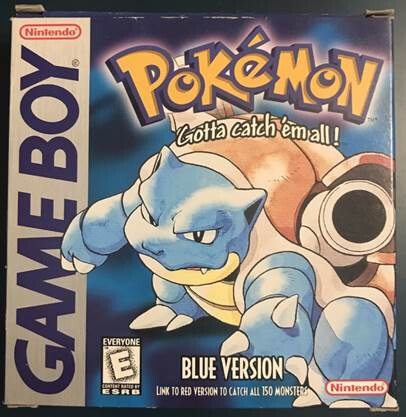
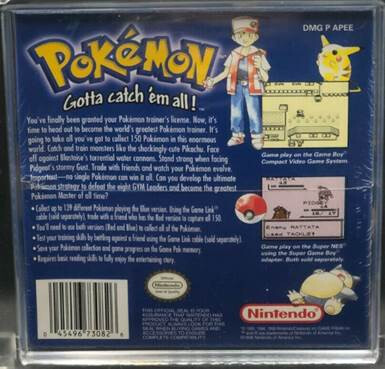
On the right side of the box, you can find a “100% Total Recovered Fiber 55% Post Consumer Content” stamp.
The bottom of the box is a smooth flap that can be used to open the bottom of the box. As stated above, this type of box is commonly referred to as a double-ended box.
If you look inside of the box of a first print Blue version, the insert, which holds the cartridge, can only be found fixed (glued) to the inside of the box.
The four folding tabs on either side of the box read U/DMG-APEE USA.
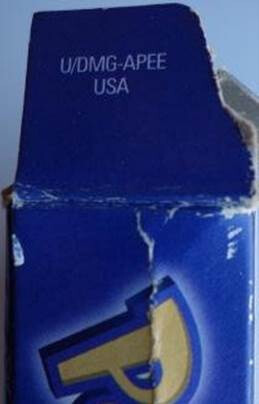
Finally, the cartridge of a first print Blue is designated by the DMG-APEE-USA code and pixelated white ESRB symbol.
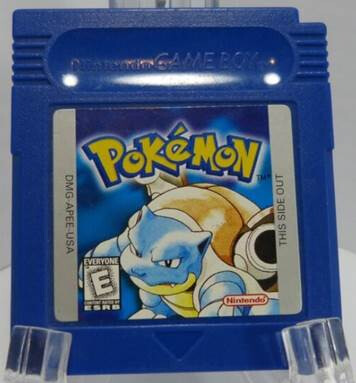
Second Print Blue
Nearly identical to its predecessor, the second print Blue version carries over the first print’s pixelated white ESRB logo on the front of its box and the Sandshrew vs Meowth screenshot on the back. The only difference being the correction from “Red” to “Blue on the back.
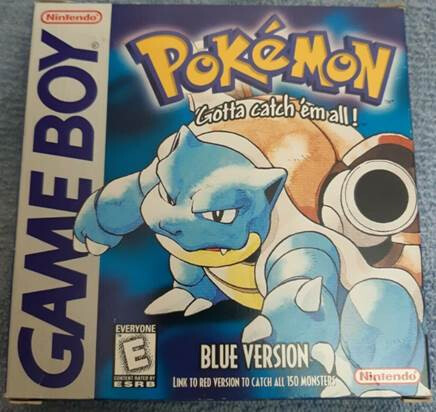
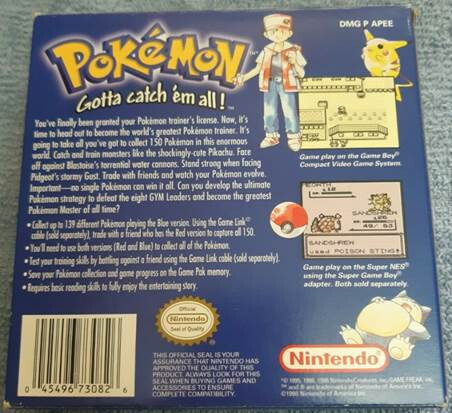
Second print Blue copies also carry over the “100% Total Recovered Fiber 55% Post Consumer Content” stamp from their predecessor on the right side of their boxes.
The bottom of a second print Blue box is double-ended, like the first print.
The cartridge holding insert is fixed, just like it is in the first print.
Identical to the first print, the four folding tabs on either side of the box read U/DMG-APEE USA.
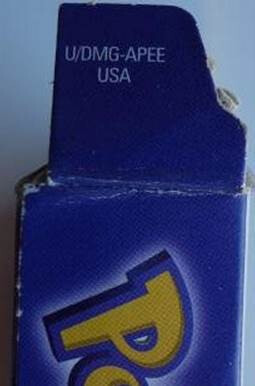
A second print Blue cartridge is identical to a first print Blue cartridge as well, with the DMG-APEE-USA code and pixelated white ESRB.
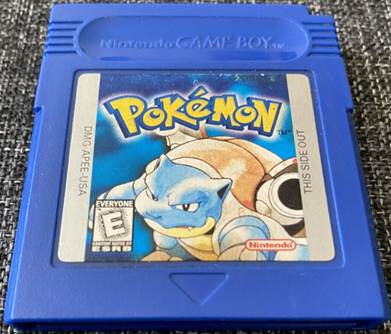
Third Print Blue
The third print of Blue is similar to Red version’s second print. The pixelated white ESRB logo on the front of the box and the Pidgey vs Rattata screenshot on the back of its box are demonstrated below.

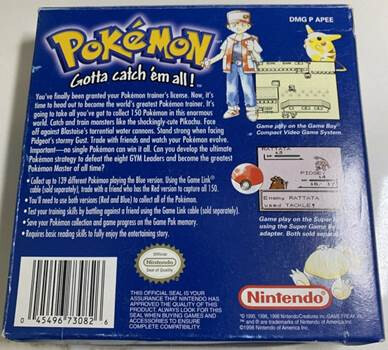
Much like Red’s second print, Blue’s third print can be found sporting an “83% Total Recovered Fiber 81% Post Consumer Content” stamp on the right side of the box.
Third print Blue versions also have a “Y-fold” design on the bottom of their boxes, much like second print Red version.
The cartridge is held via a removable white tray, ending the predecessors’ fixed cartridge holder designs.
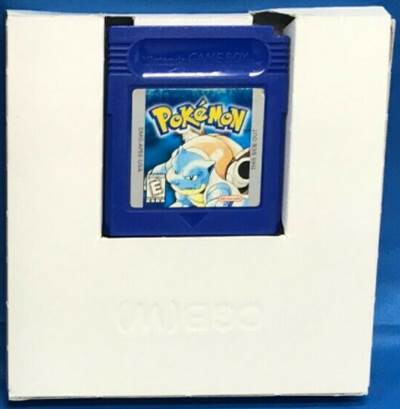
The four tabs on the top and bottom of the box read code DMG-APEE USA, ending the U/ code found in the first two revisions.
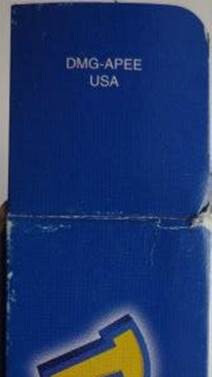
Finally, a cartridge of a third print Blue is found with a DMG-APEE-USA code (like the first and second print) as well as a pixelated white ESRB.
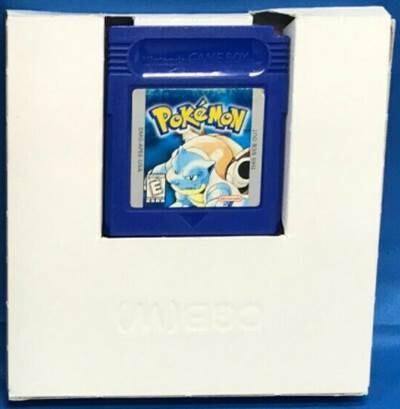
Fourth Print Blue
The fourth print Blue can be seen as the equivalent to the third print Red. This variant sports a Black ESRB on the front of the box, and a Pidgey vs. Rattata screenshot on the back of the box.
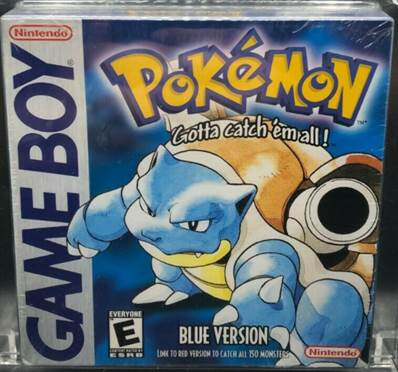

The fourth print of Blue version carries over the “83% Total Recovered Fiber 81% Post Consumer Content” stamp on the right side of the box from the third print.
Additionally, fourth print Blue versions carry over its predecessor’s closed bottom “Y-fold” design.
In the interior, the cartridge holding insert is carried over from the third print box’s box.
The four tabs on the top and bottom of the box read the newly revised code DMG-APEE USA-1.
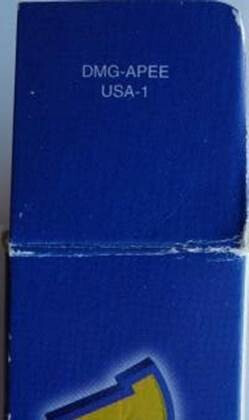
Finally, a cartridge of a fourth print Blue is found with the DMG-APEE-USA-1 code and solid black ESRB symbol, much like the cartridge in a third print Red version.
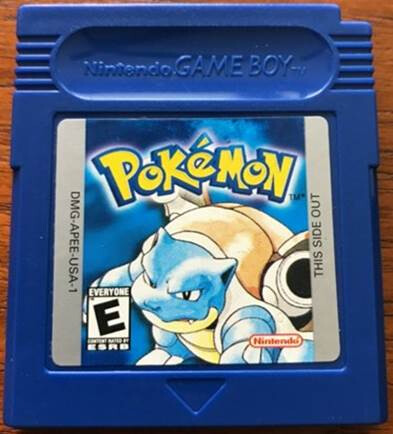
Pokémon Yellow Version
Pokémon Yellow has a little bit more uncertainty than Red and Blue version. I’ve found 4 variants of Yellow version so far, and I’m outlining them in the orders which I believe are accurate.
First Print Yellow
Like the first print of Red and Blue, the first print of Yellow also displays a pixelated white ESRB on the front of the box. The back of the box displays a Pikachu vs. Caterpie screenshot, although this screenshot is consistent throughout all of Yellow’s print runs and offers no differentiation.
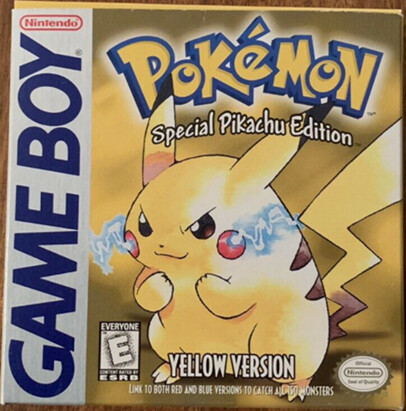
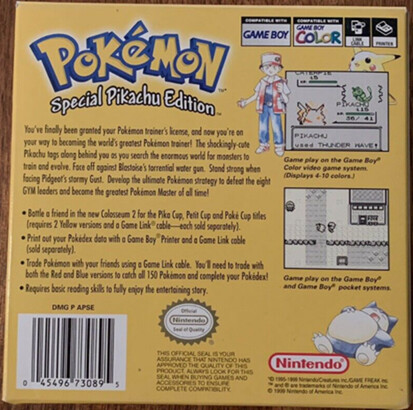
On the right side of the box, you can find an “83% Total Recovered Fiber 81% Post Consumer Content” stamp.
The bottom of the box is a Y-fold.
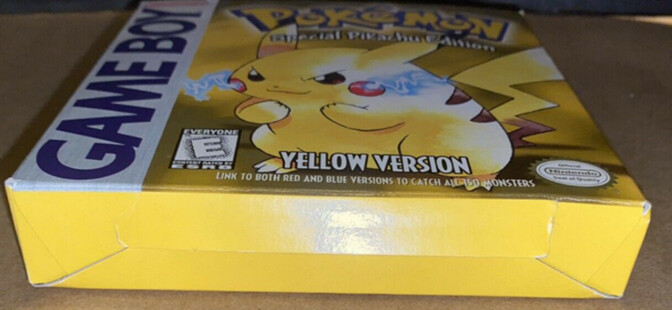
If you look inside of the box of a first print Yellow version, you can see that the cartridge holding insert is removable, just like the insert of Red and Blue’s later runs.
The four closing tabs of a first print Yellow read DMG-APSE USA.
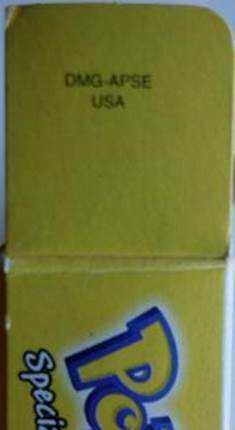
Finally, the cartridge of a first print Yellow is designated by the DMG-APAE-USA code and pixelated white ESRB symbol. This cartridge is exclusive to this variant of Yellow version.
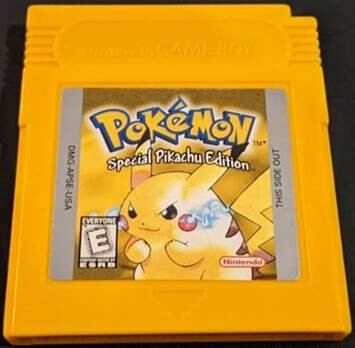
Second Print Yellow
A second print Yellow version, can be misinterpreted as a first print, can be differentiated by its lack-of, or missing ESRB symbol. The box shares a lot of DNA with Red & Blue’s early production boxes.
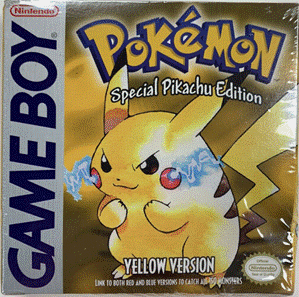
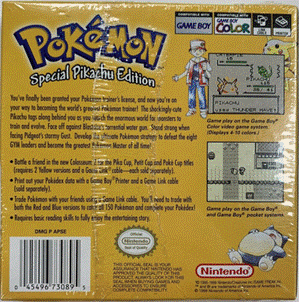
Second print Yellow copies carry the “100% Total Recovered Fiber 55% Post Consumer Content” stamp on the right side of their boxes.
The bottom of a second print Yellow box is double-ended.
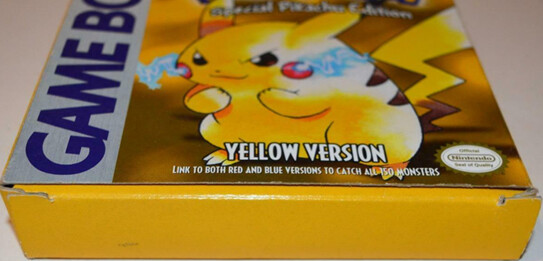
The cartridge holding insert is fixed.
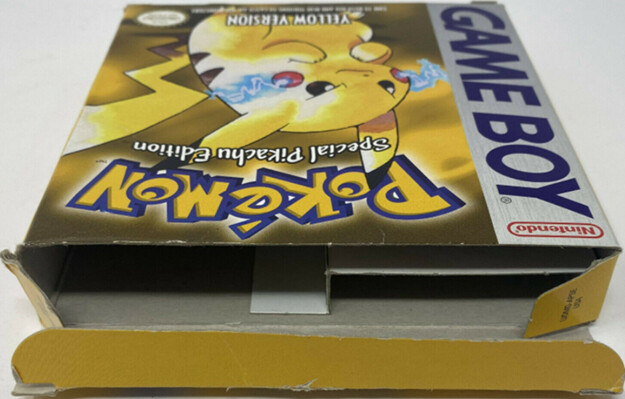
The folding tabs can be found to read U/DMG-APSE USA.
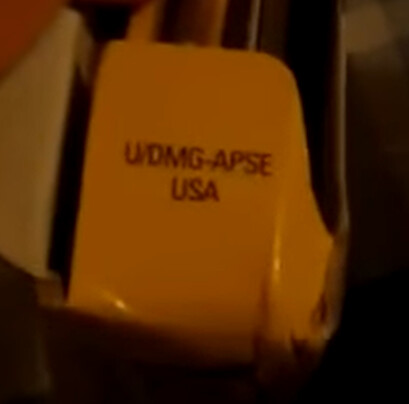
From eBay surveying, I’ve found that many of these missing ESRB boxes’ cartridges contained pixelated white ESRB symbols with code DMG-APSE-USA. I did reach out to a few sellers (who advertised that they were the original owners of their copies) to verify if the cartridge was replaced for resale purposes. I was told that the pixelated white ESRB cartridge was what came with the box.
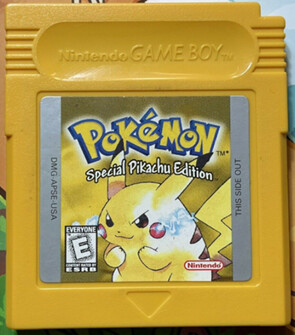
This variant muddies the water a bit because this missing ESRB Yellow version unboxing displays a solid black ESRB cartridge on the cartridge (DMG-APSE-USA-1).
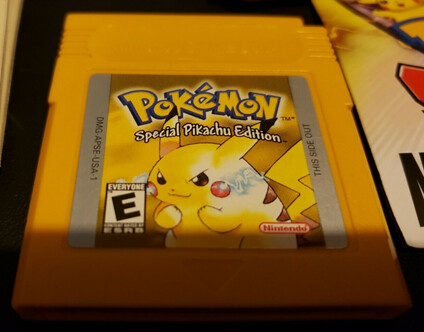
I would conclude that the transition of white to black ESRB happened during the production of this variant.
Third Print Yellow
My newest finding for the revision of this guide has to be the third print Yellow version. This variant displays the already known black ESRB symbol on the front of the box.
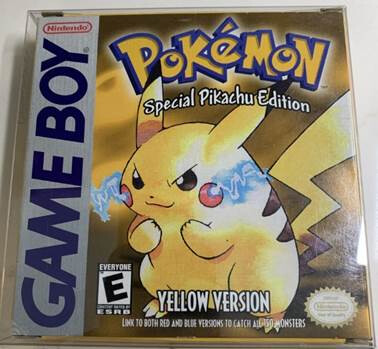
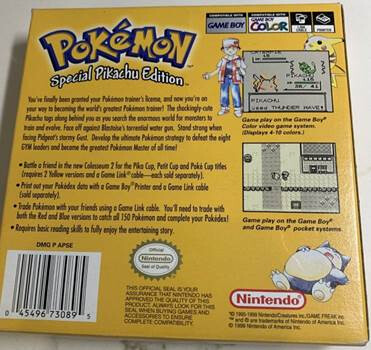
A “100% Total Recovered Fiber 55% Post Consumer Content” stamp is found on the right side of the box.
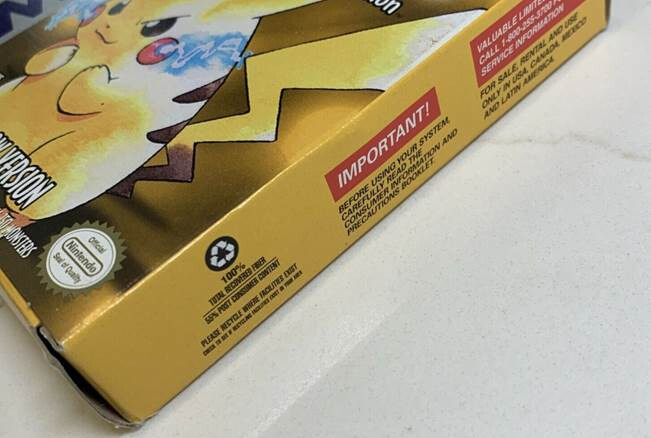
Additionally, this variant has double-ended ended box.
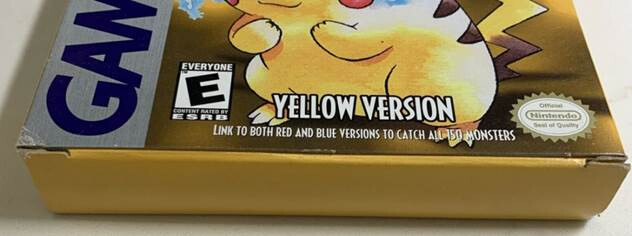
The cartridge holding insert is fixed.
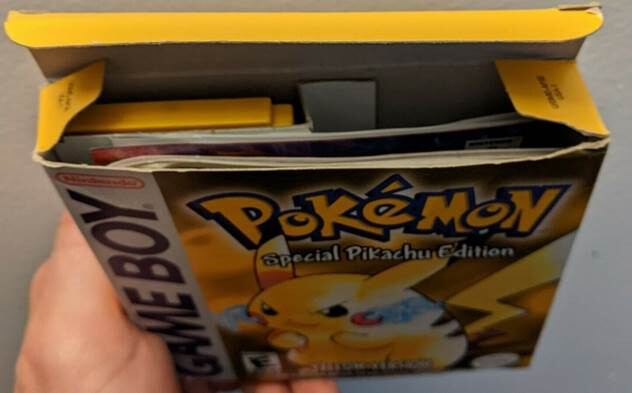
The folding tabs can be found to read U/DMG-APSE USA-1.
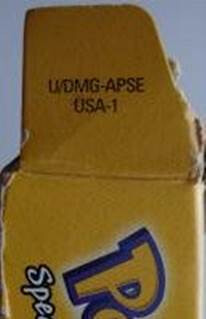
Finally, a cartridge of a third print Yellow is found with a DMG-APSE-USA-1 code and a solid black ESRB symbol.
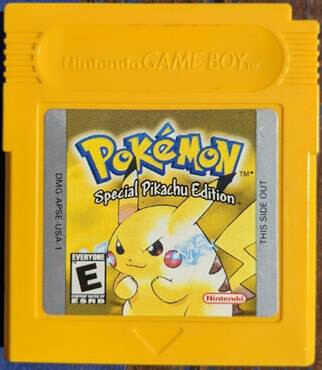
Fourth Print Yellow
A fourth print Yellow sports a Black ESRB on the front of the box, like the third print. The shade of yellow of a fourth print Yellow is also noticeably brighter than an earlier revision.
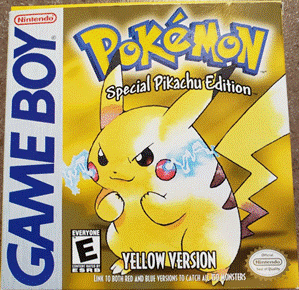
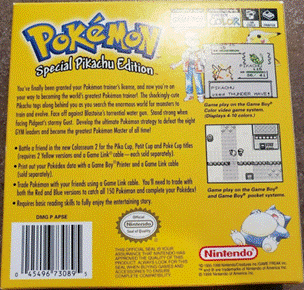
The fourth print, also carries the “83% Total Recovered Fiber 81% Post Consumer Content” stamp on the right side of the box, unlike the third print.

Additionally, fourth print Yellow versions ditch the third print’s double-ended box for a Y-fold.
In the interior, the cartridge holding insert is changed yet again from a fixed design to a removable design.
The folding tabs can be found to read DMG-APSE USA-1.
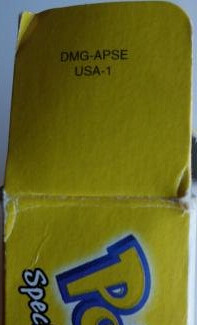
Finally, a cartridge of a fourth print Yellow is found with a newly revised DMG-APSE-USA-1 code and solid black ESRB symbol, just like the third print.
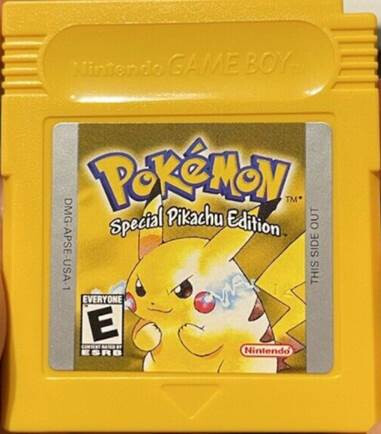
Final Thoughts
Most images above were researched from surveying eBay listings and Heritage Auctions listings. One new feature I’ve added to this guide was the folding tabs, brought to my attention by @adamw , many thanks for allowing me to borrow your folding tab photos, check out his informative guide that extends to next generation games as well!
Next, I should probably share my findings and speculation on the matter:
Entertainment Software Rating Board, or ESRB, denotes that they established the E rating in 1998:

I estimate this symbol released between March 11th - April 1998, as Castlevania Legends (released March 11th 1998) was the last Game Boy game to obtain the old K-A ESRB rating and Bomberman GB (Released April 1998) was the first game to miss the K-A rating and obtain the new pixelated white E ESRB rating.
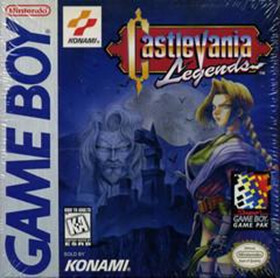
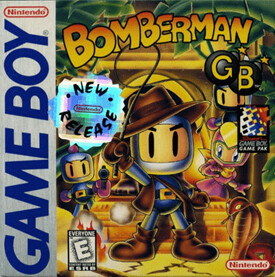
Meanwhile, on September 28, 1998, Nintendo released Pokémon Red and Blue.
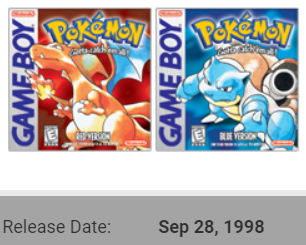
Source: www.pokemon.com/us/pokemon-video-games/pokemon-red-version-and-pokemon-blue-version/
During Red and Blue’s release, the pixelated white ESRB E symbol was still in use. In 1999 however, ESRB changed the look of their symbol from a pixelated white E to a solid black E:

Source: www.esrb.org/history/
I estimated this change of ESRB symbols to have happened in the month of September of 1999. Spawn cartridges, released September 15th, 1999, seem to exist with pixelated white ESRB symbols on their cartridges, while Antz cartridges, released September 27th, 1999, seem to only exist with solid black ESRB symbols.
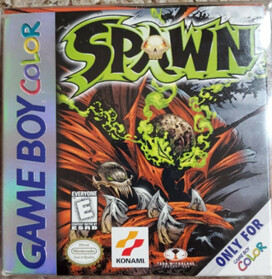
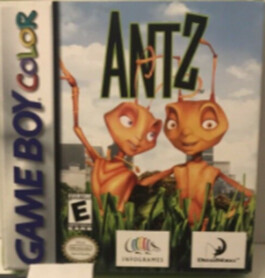
Upon further research however, I noted that Pokémon Yellow Version, which released on October 19th, 1999, was obtainable with a pixelated white ESRB symbol, during a time where games could then be found with the solid black ESRB symbol. Therefore, there is uncertainty as to when exactly the solid black ESRB symbol completely replaced the original pixelated white ESRB symbol for good.
I speculate that Nintendo had the White ESRB Yellow boxes queued up for production during this time period, resulting it being the earliest print of Yellow version. The missing ESRB Yellow box initially confused me into thinking that it came first as it can contain white ESRB cartridges and early production box features (such as a double-ended box with a fixed insert), though because it can contain black ESRB cartridges as well, it had to have been packaged during the the transition of white to black ESRB. This concludes it as the second variant. The last two variants of Yellow version, are less obvious, than the first two variants. I speculate the third print is the double-ended box simply because Red & Blue had double-ended boxes before they had Y-fold boxes.
I can justify Red & Blue’s early prints to be the Sandshrew vs. Meowth variants simply because Sandshrew and Meowth are both Red version exclusive and thus misleading to be displayed on Blue’s box, thus the correction to non-version exclusive Pokemon. Blue version’s “Red” text on the back of the box is another clear error that called for a revision to be made, establishing a difference between the first and second print Blue version.
I plan to add additional information to this guide regarding production codes, cartridge motherboards, and anything else I may come across, hopefully in the near future. I’d need to purchase some more game variants to verify this information however, so bear with me. ![]()
I’ll end off with an updated summary table that includes all of the information that I have so far confirmed thus far.
Version History
Currently, this guide is version 2.1.
Version 1.0 → 2.0
- Added Blue version’s “Red” text error
- Added Yellow version’s Black ESRB/Double-Ended variant
- Added folding tab photos
- Early production run renamed to first print
- Mid production run renamed to second print
- Late production run renamed to third print
Version 2.0 → 2.1
Formatting modifications by @pfm


